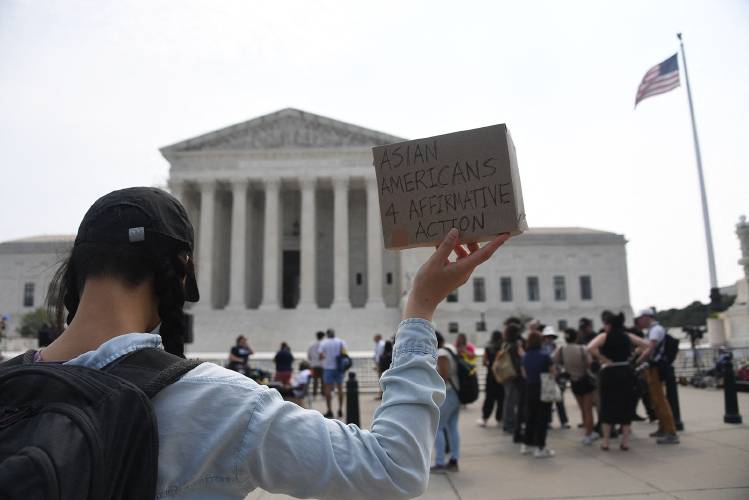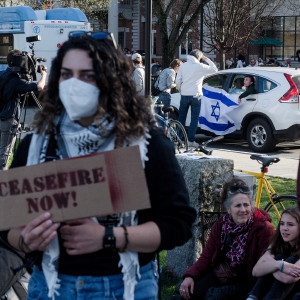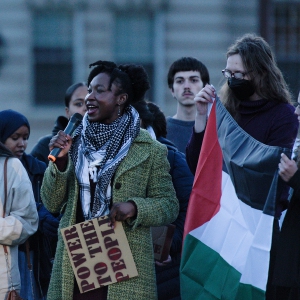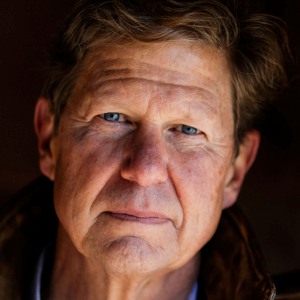Comment: ‘Equal protection’ cannot justify ending affirmative action

Affirmative action supporters demonstrate outside the US Supreme Court in Washington, DC, on June 30, 2023. The court on June 29 banned the use of race and ethnicity in university admissions, dealing a major blow to a decades-old practice that boosted educational opportunities for African-Americans and other minorities. (Olivier Douliery/AFP via Getty Images/TNS) AFP via Getty Images/TNS — Olivier Douliery
| Published: 07-17-2023 10:30 AM |
Essentially, the grenade thrown at Affirmative Action by the Supreme Court is powered by the Equal Protection clause of the 14th Amendment to the Constitution, which mandates that “no state shall ... deny to any person within its jurisdiction the equal protection of the laws.” According to Chief Justice John Roberts, who wrote the majority opinion in this case, this clause means “that all persons, whether colored or white, shall stand equal before the laws of the States.”
But just what is the practical meaning of equality before the law?
Suppose two men are separately accused of manslaughter but only one of them can afford an expert defense attorney while the other must accept a public defender overloaded with so many cases she can barely keep up with any of them. In what sense are these two defendants “equal” before the law? In what sense do they have an equal shot at getting justly tried — or even justly treated in plea deals? Would Students for Fair Admission, which brought the case against Harvard and the University of North Carolina, admit that both such men are being fairly treated, equitably treated?
In the case of admissions, the slipperiness of the equality formula is compounded by the superficial plausibility of abolishing all racial discrimination. Back in 2007, John Roberts famously declared that “the way to stop discrimination on the basis of race is to stop discriminating on the basis of race.” But the real meaning of this tidy formulation is plain: The way to stop discrimination against Black applicants is to stop discriminating in favor of them, to stop giving them opportunities equal to or even comparable to the kinds of preference that for years have been granted to white students. Right now, in fact, the court’s ruling against affirmative action does nothing to end preferences for “legacies”: applicants lucky enough to be related to one or more alumni of the school they hope to attend. Is it any “fairer” to discriminate in this way against “non-legacy” applicants than to discriminate against defendants who cannot pay for expert legal counsel? And is it fair to grant credit to one kind of purely hereditary status (relation to one or more alumni) while denying it to another (race)?
Ironically enough, the practice of favoring legacies may partly explain why a record percentage of students just admitted to Harvard last spring are Asian American. Even as Students for Fair Admission somehow persuaded the Supreme Court that Harvard was treating such students unfairly, 29.9% of those just admitted to Harvard turn out to be Asian American — a 2.1% jump from last year. At 15.3% of the incoming class, African American students make up just over half that percentage.
To be sure, there are two silver linings on the cloud just cast over the college admissions process.
One is that colleges and universities remain perfectly free to favor students from low-income families — regardless of color. Given two students of roughly equal academic aptitude, for instance, it could be argued that the white daughter of a South Boston mail carrier deserves at least as much preference as the Black son of a corporate lawyer.
Furthermore, the court’s decision still allows Black students to explain in personal essays how their race has shaped and defined their characters.
Article continues after...
Yesterday's Most Read Articles
 Dartmouth moves swiftly to stymie demonstration, leads to 90 arrests
Dartmouth moves swiftly to stymie demonstration, leads to 90 arrests
 Dartmouth graduate student-workers go on strike
Dartmouth graduate student-workers go on strike
 At Dartmouth, hundreds protest ongoing war in Gaza and express support for academic freedom
At Dartmouth, hundreds protest ongoing war in Gaza and express support for academic freedom
 Art Notes: City Center Ballet celebrates 25 years
Art Notes: City Center Ballet celebrates 25 years
But this bit of silver lining is merely silver-plated. In a recent op-ed for the New York Times, Tyler Austin Harper (a black assistant professor of environmental studies at Bates College) explains just how the opportunity to tell personal stories about race will prompt students to “game” the system. For years, college applicants whose parents were rich enough to afford private tutors effectively bought higher SAT scores. Now, Harper explains, new tutoring services will offer to show African American college applicants how to sound like heroic survivors of racially disadvantaged school systems.
Perhaps this fear is far-fetched. Perhaps any black student who is strong and determined enough to reach the top of their class in an inner-city high school will also be strong enough to demonstrate their authenticity without the aid of a high-priced tutor. But in claiming that the doctrine of “equal protection” makes racial preference unconstitutional, the court has simply perpetuated the fiction that we are all equal before the law, which is just as implausible as the claim made by the slaveholding Thomas Jefferson: that all men are created equal.
James Heffernan is a professor of English emeritus at Dartmouth College.

 Editorial: Chris Sununu’s moral vacuum
Editorial: Chris Sununu’s moral vacuum Editorial: Gambling tarnishes America’s sporting life
Editorial: Gambling tarnishes America’s sporting life By the Way: A white nationalist’s many mistruths
By the Way: A white nationalist’s many mistruths Column: The age-old question of what to read
Column: The age-old question of what to read
